Culture of Experts
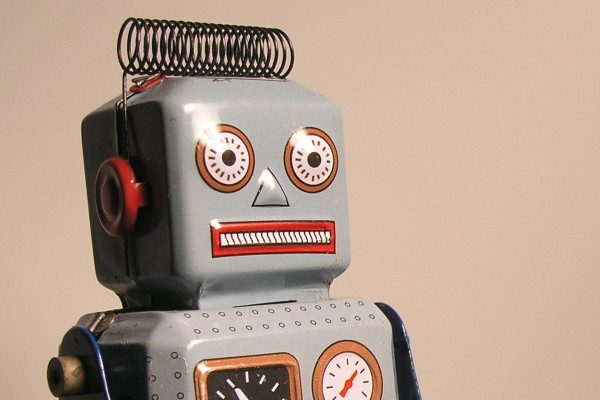
Module #14
AI: What Jobs will it replace?
In the not-so-distant future, Artificial Intelligence (AI) will change the face of the workforce. It is inevitable, many of the familiar people that we now see within the workforce will be replaced by alarmingly unfamiliar machinery; AI robots. Right now, is the best time to look at the unskilled and mid-skilled workforce and develop those workers who can rise above the positions that will eventually be replaced by AI. Right now, is the best time to study the qualities that define expert, and start looking for these qualities within existing employees and new hires. Those who rise above AI will not be replaced by AI. Those who find mastery will be irreplaceable.
Replacing employees with new technology is a sensitive subject, but there is no way around it. AI will replace jobs in the future, just as automation has done so in the past. It is the responsibility of leadership to:
1) Understand the upcoming changes.
2) Commit to a Culture of Experts, to prepare the entire organization for the changes that will come. For this, leadership must understand, recognize, find and develop Unconventional Experts; who will be able to use AI as a tool and advance beyond the positions that will expire.
3) Benefit from AI, when and where applicable.
AI will be the next world-altering technological advancement. Soon, AI software applications, AI robots and AI self-driving vehicles will be advanced enough to outperform humans with many tasks, eliminating far more jobs than they add. AI adoption will be a matter of economics and companies that chose to ignore obvious financial advantages will not be able to compete.
• AI software advances will make our current computer software smarter, create new software applications, add AI functionality to most computer controlled products and spark new app-driven markets.
• AI robots will cost less than human workers and excel in repetitive tasks.
• AI self-driving vehicles will transform both the transportation industry and the automobile industry.
• AI products will have the ability to see, read, write, listen and speak. They will be able to recognize, categorize, make predictions and make decisions. Most important, they will be able to learn.
For leadership, the time to start planning for AI is RIGHT NOW! A Culture of Experts can help posture an organization for AI, as it looks at work-process with a perspective that applies to both human intelligence and artificial intelligence, and champions those attributes that are uniquely human and irreplaceable.
Soon, AI will start to redefine expert-level work. If an AI robot can master a task, human expertise will be removed and the role will be redefined. Where AI fails, exclusively human abilities will become highly valued. Within a Culture of Experts, the differences are defined today and expert-level work is championed now.
Hire today, the type of talent that you will need in the future. The time to start building a Culture of Experts is RIGHT NOW!
Perspective
To put things in perspective, let’s take a quick look at current industrial and commercial technologies. Certainly, these technologies have been responsible for eliminating jobs, but they have also been instrumental in creating new jobs, facilitating job efficiencies and developing new markets within our economy. Their adoption also holds domestic benefits, compared to most outsourcing and offshoring solutions.
Automation – a current technology
Currently, Programmable Logic Controller (PLC) technology is typically used to control automated assembly lines. On a factory assembly line, the automated machine that screws bottle caps onto bottles of ginger ale, for example, will use PLC technology to accurately perform this task. If wear-and-tear causes the machine’s accuracy to drift and the bottle caps don’t screw on tightly, a human PLC programmer will make adjustments to the code and correct the issue. Some assembly lines use robotics to perform advanced manipulations. Although, arms and grippers lend to human-like flexibility, they still use PLC technology for predetermined and predictable control.
Automated assembly line machines are extremely expensive. This is because they are custom designed and built to perform one specific task. The machine that screws bottle caps onto the bottles of ginger ale is night-and-day different than the machine that puts the labels onto those same bottles. PLC controlled robotics can be used for a variety of applications, however, they are typically engineered into a specific part of a production environment and programmed to perform a single task. Automated assembly line machines and robotics are expensive to buy, install and maintain. Because of this, their implementation is usually on a grand scale. Manufacturing, processing, mining, warehousing and agriculture are examples of environments that benefit from their use.
Automation has not replaced all assembly line positions. The visual inspection of product currently requires humans, to find and reject product that does not meet quality control standards. Logistical movement often requires human interaction, to handle unfinished and finished goods . Behind the scenes, the experts who install, maintain and repair industrial machinery will always be in high demand.
Computers – a current technology
Computers, smart phones and the internet are so ingrained in our lives, it’s challenging to think of life without them. With a giant scope of influence within our economy, there is little regret in adopting these technologies. When considering the new markets and advanced business efficiencies computer technologies have created, resulting job losses are almost viewed as collateral damage. The most recent social change that computer technology has facilitated is the sharing economy. Ride sharing applications like Uber and space sharing applications like Airbnb allow people to make money by leveraging their personal possessions and providing services. Although, Uber and Airbnb will stress the taxi and hotel industries, they will shift employment more than they will eliminating jobs.
AI – A current technology?
Because AI is in use today, some might view it as a current technology. As we look at the trajectory of AI, we will see that it is an infant, in its current form. When AI start replacing human workers, its presence will be highly visible, as well as controversial.
Putting change into perspective
It is important to note, AI will not drastically change the current technologies that have previously replaced jobs. The machine that screws the bottle caps onto the bottles of ginger ale will look the same; AI will allow it to visually inspect product, self-diagnose issues and efficiently schedule down-time. The computer software that keeps track of inventory at the local supermarket will continue to do so. AI will allow it to more accurately predict trends and make purchasing decisions that result in less waste.
In general, when AI becomes an extension of a current technology, it will be used as a tool, guided by experts. When AI materializes as a new solution, designed to perform human tasks, it will compete with humans and eventually take jobs.
When will AI robots replace jobs?
Soon, there will be a strong business case for mass produced AI robots. Before moving forward, AI developers and manufacturers will first need to:
1) Advance the complexity of machine learning so that AI can perform specific tasks with a minimum of human intervention.
2) Successfully demonstrate commercial and industrial effectiveness, on a grand scale.
3) Commit substantial investment towards R&D, manufacturing and marketing, on a grand scale.
There are many predictions regarding the timing of AI development, AI acceptance and AI related job loss. Looking at the progress of computer technology, from 1990 to 2000, one can gain some insight into the speed of adoption. With AI, the progress will be much faster, as computer technology is an existing foundation for which AI can build. Robotics is also an existing technology for which AI can build. The AI market will not be touch-and-go, it will be ready-to-go; seeking positions where it can replace humans, as the primary funding for its existence.
How much will AI robots cost?
Before we look at AI robots, let’s look at a cost comparison between a current PLC robotic implementation and human workers. Today, a single PLC robotic arm, equipped to perform a specific manufacturing task, will cost between $50,000 and $150,000. In addition, there will be substantial operating expenses involved, to maintain its service.
Cost of one PLC robotic arm, covering two work-shifts for 5 years:
PLC Robotic arm, gripper and all accessories: $150,000
All operating expenses over 5 years: $100,000
Total: $250,000
Cost of two $15/hour human workers, covering two work-shifts for 5 years:
Total wages over 5 years: $312,000
Various insurances, benefits and taxes over 5 years: $63,000
Total: $375,000
Cost savings: $125,000 over 5 years ($25,000 per year)
Looking at the cost savings, we can see why manufacturers continue to implement PLC robotics within large scale facilities. Since AI robots will be able to perform more complex tasks, they will create new markets. Once mass produced, economy-of-scale will push down their prices. Because AI robots can self-learn and self-correct, their operating expenses will also go down. Using future dollars and future wage rates; an example cost comparison between an AI robot and human workers is predicted below.
Cost of one AI robot, covering two work-shifts for 5 years:
AI robot: $75,000
All operating expenses over 5 years: $25,000
Total: $100,000
Cost of two $25/hour human workers, covering two work-shifts for 5 years:
Total wages over 5 years: $520,000
Various insurances, benefits and taxes over 5 years: $80,000
Total: $600,000
Possible cost savings: $450,000 over 5 years ($90,000 per year)
As the price of AI robots goes down, they will fill commercial environments that are currently dominated by human workers. In industrial environments, AI will be used to control automated machines and robotics, replacing PLC technology. AI robots will replace the humans who are currently needed for visual inspection and the logistical movement of unfinished and finished goods. The experts who maintain and repair this machinery will use AI as a tool, to better perform their jobs.
The future of AI – in five groups
To take a deeper look into AI, we divided it into five groups to make it easier to understand. Each of these groups will be expanded upon below with insight into the jobs that will be replaced and the jobs that will be safe.
1) Task specific AI robots
2) Mobile AI robots
3) Humanoid AI robots
4) AI self-driving vehicles
5) AI software applications and AI controllers
1
1) Task specific AI robots
Not a one-size-fits-all AI robot, but still mass produced for commercial and industrial applications. They will have one or more robotic arms and their grippers will be customized to fit one specific task. Because their use is specific and predetermined, they will need a minimum of training. Like all AI robots, they will be able to self-learn and self-correct, once they get started.
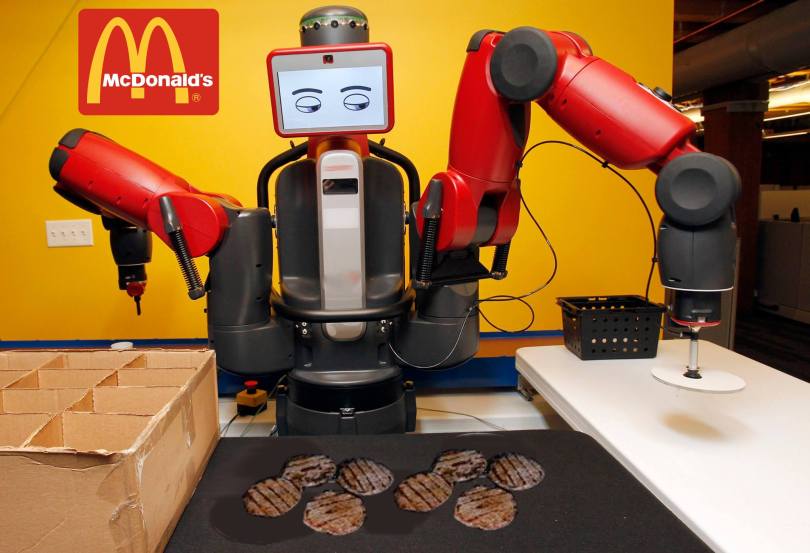
Restaurants, coffee shops and delis: A good chef is irreplaceable, but line cook, food preparation and barista jobs will be replaced by task specific AI robots. For situations where supplies are difficult to manipulate, like with the construction of a sandwich, there will be appropriate dispensers to assist. Fast food chains will be the first to adopt this technology.
Job loss alert: Restaurant line cook, barista and food preparation jobs will be replaced by task specific AI robots.
Quality control: Today, humans are still used for visual inspection, within manufacturing, processing and agricultural environments. AI robots will use computer vision to inspect finished product and use robotic arms and grippers to physically reject product that does not meet a predetermined standard. These AI robots will tie into the company’s databases and big data resources, to follow quality control trends. AI will be able to make predictions and decisions, that lead to corrective actions.
Job loss alert: Industrial quality control jobs will be replaced by task specific AI robots.
Manually operated machine manufacturing: Skilled machinists will not be replaced by AI robots, however, many mid-skilled machine operator jobs will be in danger. These types of positions are usually present within smaller manufacturing facilities, where automated assembly lines are not practical. AI robots will be capable of putting unfinished goods into a machine, operating the machine, inspecting the results and forwarding product onto the next step of the process.
Job loss alert: Although, skilled machinists will have job security, machine operators will be replaced by task specific AI robots.
Janitorial: iRobot, maker of the Roomba robot vacuum, has already sold 20 million consumer cleaning robots. Commercial and industrial janitorial AI robots are currently available, but not widely adopted. Cleaning is not a single task, it is several tasks that are dependent on the room and surfaces. There will be several types of cleaning AI robots, specific to vacuuming, mopping, bathroom cleaning and floor stripping and polishing. Will the AI robot that cleans the toilet also clean the kitchen countertop? Some things will need to be worked out.
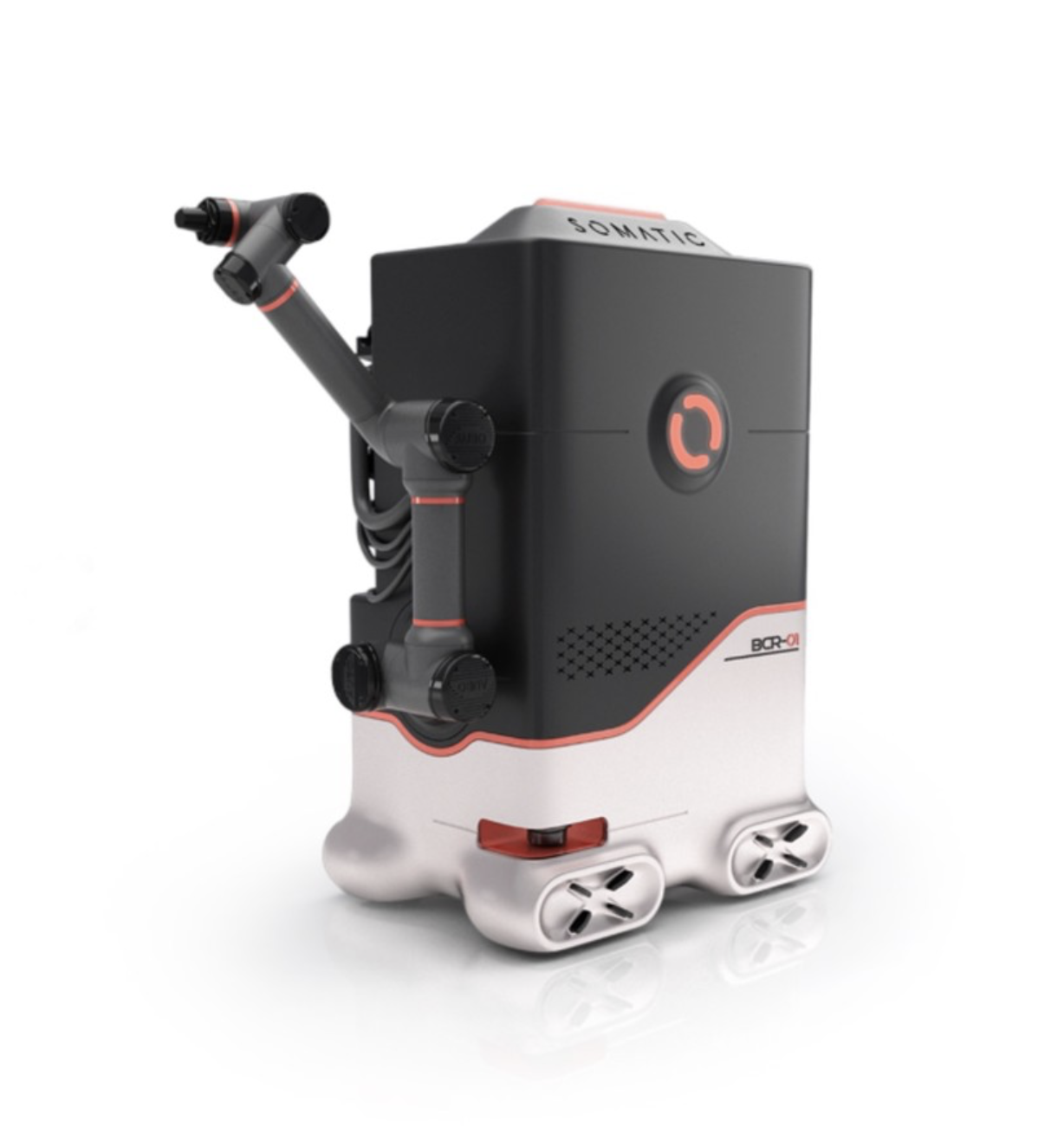
Job loss alert: Janitorial jobs will be replaced by task specific AI robots.
Courier services: Postal and delivery services will use AI robots to pick up and deliver mail and packages. Currently, there is technology in development that will allow multiple AI robots to communicate and share a common goal. If one AI robot finishes its route, it will assist another.
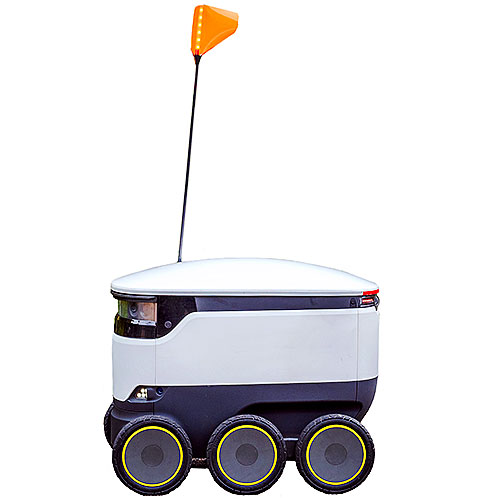
Job loss alert: Courier and postal worker jobs will be replaced by task specific AI robots.
Retail and grocery stores: Specialized AI robots will be designed for various types of retail products. Specific clothing robots, for example, will be able to hang or fold clothing, separate items by size and straighten displays. They will be tied into inventory databases, to control inventory as they work. They will have speech recognition and be able to tell customers where items are located, and their availability in various sizes. For online orders, they will be able to act as a personal shopper, gathering product curbside pickup or delivery.
Some manufacturers will provide their own AI robots, to be used for their specific products. Coke and Pepsi, for example, will have competing robots, making sure their products are well represented. Some of them may show advertisements for their products, as they stock shelves.
Job loss alert: Retail and grocery store clerk and stocking jobs will be replaced by task specific AI robots.
Lawn care service: Lawn care companies are very inexpensive to start, so they are usually small businesses with small crews. The price of AI self-driven lawnmowers and trimmers will require capital and larger companies will put many of the smaller companies out of business. Homeowners who cut their own grass will continue to do so, however, some will buy AI lawn care robots that are designed for the consumer market and suited for weekly use.
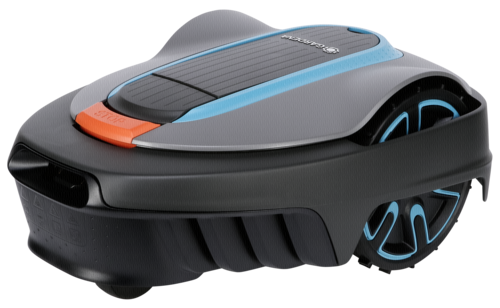
Job loss alert: Lawn care jobs will be replaced by task specific AI self-driving lawn mowers and trimmers.
Out-of-reach and hazardous environments: Many dangerous and difficult to get to places use current robot technology. AI robots will be able to work more autonomously, but will still require experts to guide the most critical tasks.
1) Drones
2) Water craft
3) Submersibles
4) Cherry pickers
5) Space vehicles
6) Diggers

Low or no job loss: AI robots that help professionals maintain safety, not resulting in high levels of job loss.
Military and law enforcement: With seemingly endless budgets, the armed forces will have a wide variety of advanced AI robots, patrolling the land, sea and sky. Capable of finding and sometimes killing the enemy, they will help keep their human soldiers counterparts out of harm’s way. They will also be able to find and remove explosives. Police AI robots will be equipped with non-lethal weapons and have the ability to apprehend humans.
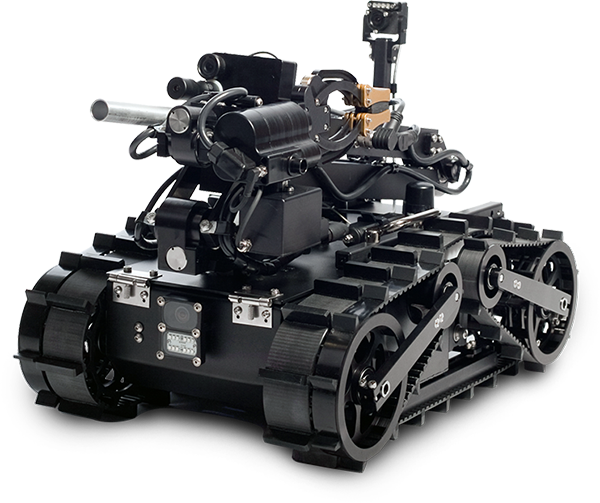
Low or no job loss: Soldiers and police will use AI robots to assist them and keep them out of harm’s way.
Expert assist: Robot-assisted surgery has been around since the 1980s. AI will help remove some of the guess-work and use big data to make better decisions. Other professions and skilled trades will benefit from AI, as expert workers will use this technology as an advanced tool to help them perform their jobs.
Medical – surgery, patient care, physical therapy, testing.
Building and construction – brick laying, roofing, flooring, tiling, concrete, iron.
Emergency – fire extinguishing, chemical spills, medical emergencies.
Safety – safety guard, life guard, child safety.
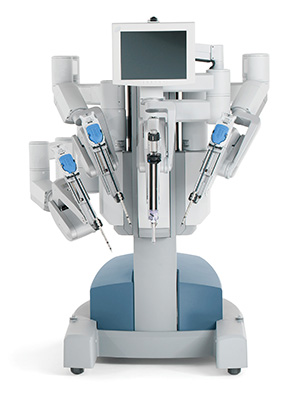
Low or no job loss: When AI robots assist an expert, the expert will require training, but their job will not be replaced.
2
2) Mobile AI robots
Focusing on logistics, self-driving mobile AI robots will be designed for industrial and commercial material handling. They will include self-driving carts, pallets and fork lifts. Some of these AI robots will have arms or lifts, to load and unload materials. Others will be loaded and unloaded; designed to carry materials from one location to another.
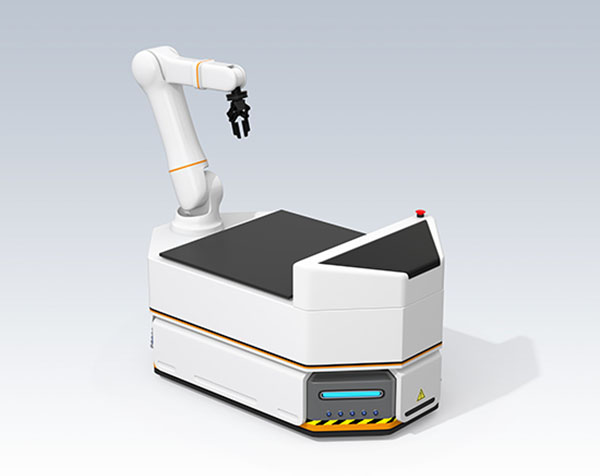
Materials handling: The low cost of self-driving mobile AI robots will make them affordable for most commercial and industrial environments, including:
• Manufacturing
• Processing
• Drilling and mining
• Warehousing
• Agriculture
• Courier
• Construction
They will be used for raw materials, finished product, warehousing and to load and unload trucks, going to and from the facilities.
Job loss alert: Material handling jobs, including forklift operators and runners, will be replaced by AI mobile robots.
Food service: Slightly more attractive than material handling robots, food serving AI robots will bring food to people, including:
• Restaurant patrons
• Hospital patients
• Hotel visitors
• Apartment dwellers
• Office buildings and facility workers
Food orders will be almost exclusively placed through the internet.
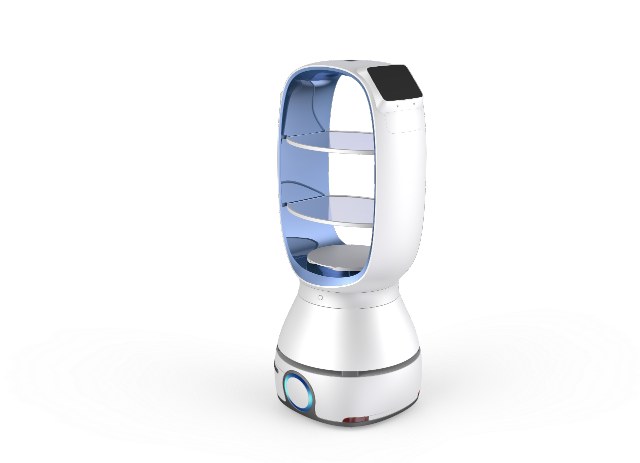
Job loss alert: Food servers and waitstaff jobs will be replaced by AI mobile robots and online ordering.
Vendors: Vacation resorts, event centers and shopping malls already provide convenient access to fast food and necessary supplies. The same foods and supplies will be available via AI robots. Rather than being in a fixed location, these mobile AI robots will bring product to customers and be able to take orders and payments via smartphone app.
Job loss alert: Vendors will be replaced by AI mobile robots.
3
3) Humanoid AI robots
Mass produced humanoid AI robots will not be designed for specific tasks, but to serve as a general replacement for humans, performing multiple tasks. Since our physical world revolves around our physical form, these robots will have much in common with us; able to perform simple human tasks.
Like humans, they will be able to see, hear and speak. They will be able to manipulate objects with arms and grippers. They will have legs or wheels for short range travel. Battery power and wireless internet will make them untethered.
Being designed for multiple tasks, rather than one specific task, general programming for odd tasks will be required. Manufacturers will provide general programs that will focus on as many tasks as they can successfully write. Users and hobbyists will customize programs further. Once guided with a general program, AI robots will be able to learn and perfect each task that they are assigned.
Like mass produced automobiles, they will be available in a limited variety of shapes, sizes and styles. There will also be add-on options, like a selection of grippers, to allow conformity to some specific tasks.
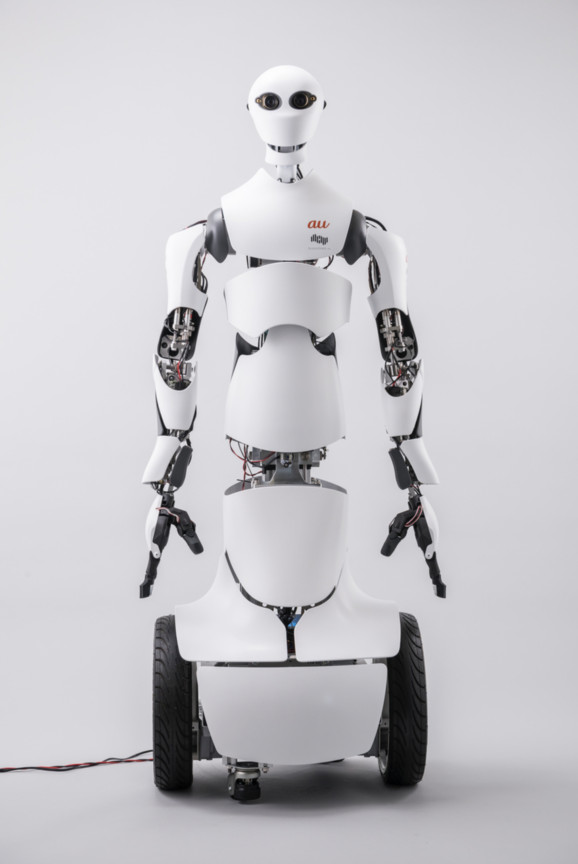
General customer service: Sometimes, the sharing of information requires a physical presence. A host at a restaurant, a greater at a box store, a librarian to find a book, a clerk to find a product and a sales associate to provide sales presentations and answer questions.
Job loss alert: Host, greeter, librarian, clerk and associate-level sales jobs will be replaced by AI humanoid robots.
Odd jobs: In commercial and industrial settings, there is always work to be done. Cleaning up scraps, delivering a tool, running an errand, answering a calculable or documented question. Humanoid AI robots will be a jack of all trades and master of none.
Job loss alert: General task jobs will be replaced by AI humanoid robots.
Small and medium-scale manufacturing: Manufacturers that were previously too small to afford automation will be able to buy a mass produced AI robot to perform repetitive tasks. If a task specific AI robot will not be practical, a humanoid AI robot will be used to learn and perform multiple tasks.
Job loss alert: Small to medium-scale manufacturing jobs that were not previously replaced by automation.
Entertainment: By today’s standards, a chess game between a chess master and computer seems very dry. With a physical presence, AI robot performance will attract much interest. Human versus robot and robot versus robot competitions will provide entertainment, with continuous robot advancement over time. Within the industry, manufacturers of AI robots will compete against each other to show their dominance.
Low or no job loss: When humanoid AI robots are used for entertainment, no jobs will be replaced.
4
4) Self-driving vehicles:
Once self-driving vehicles become unquestionably safer than human-driven vehicles, they will be widely used to transport people and goods. Agriculture will also change, once self-driving farm machinery starts to dominate the landscape.
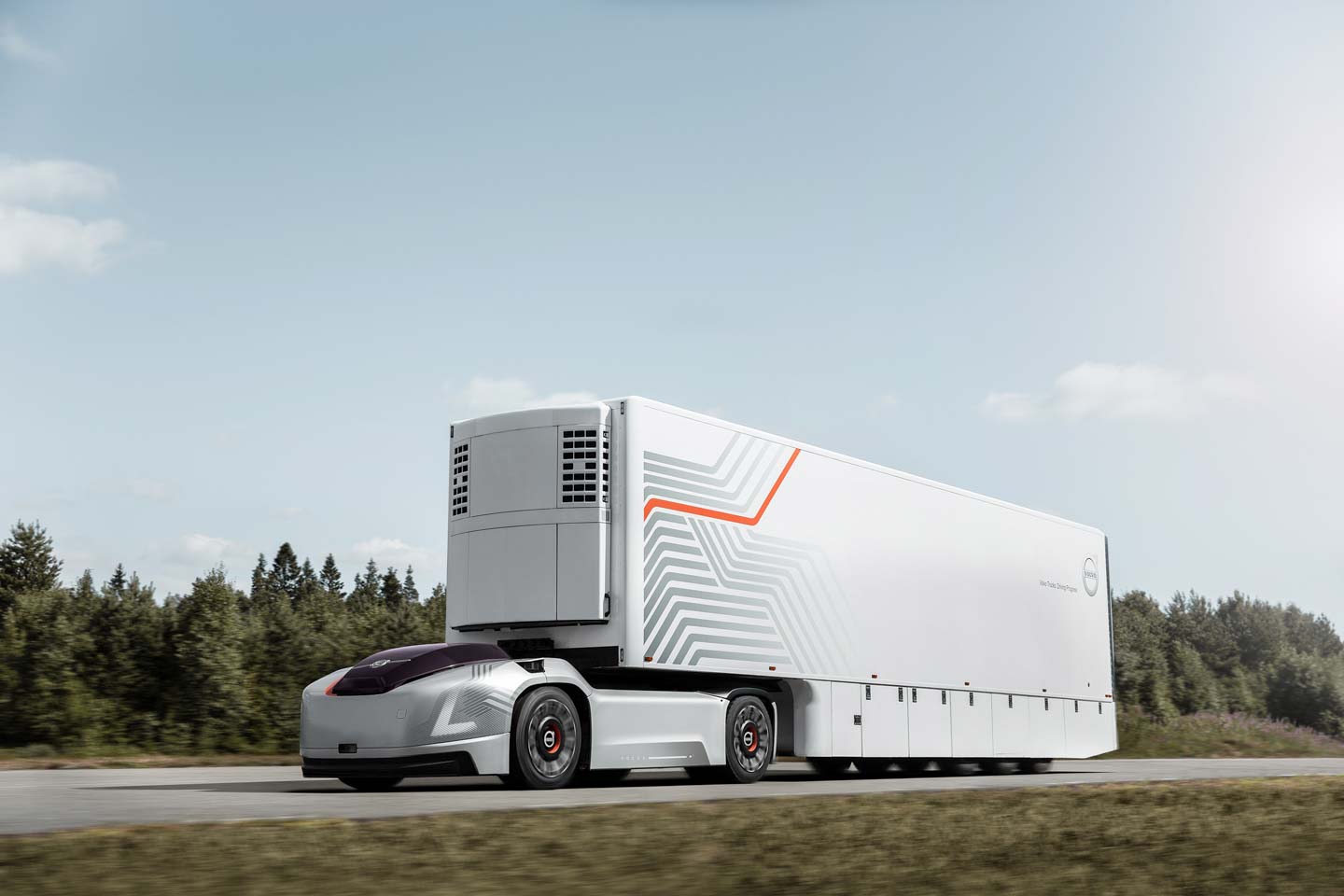
Taxi, delivery and truck drivers: AI self-driving vehicles will dramatically change the taxi, trucking and delivery industries. Since AI self driving cars will be available through the consumer market, pricing will be very affordable for both personal and commercial purchase. Consumer cars will still be used as taxis, although, AI self-driving cars will connect directly to driving apps like Uber and Lyft. Some AI self-driving delivery vehicles will have lockers built into them, for secure access to packages upon arrival. Others will host AI robots, to offload deliveries. AI self-driving trucks will no longer have sleeper cabs, as they will no longer host humans. The capacity for non-stop service will be a key advantage to AI self-driving vehicles. DOT regulations limit truck drivers to a maximum of 13.5 hours of driving per day, and even this assumes breaks and stops fall properly within the guidelines.
Job loss alert: Driver jobs will be lost, once AI self-driving trucks, taxis and delivery vehicles can safely navigate the roads.
Buses: Most existing bus routes will continue service, but AI self-driven buses will run them. Smart buses will also assist with public transportation. These AI self-driving buses do not have a pre-established route, they will travel within a general area and find the most efficient routes possible, to get their passengers to their destinations. Passengers will use their smart phones to submit their destination and provide payment. They will have immediate notification of the ETA, and can chose other forms of transportation, should bus service be slow.
Job loss alert: Bus driver jobs will be replaced by AI self-driving buses.
Agriculture: AI self-driving vehicles will include farm tractors and other specialized agricultural vehicles.
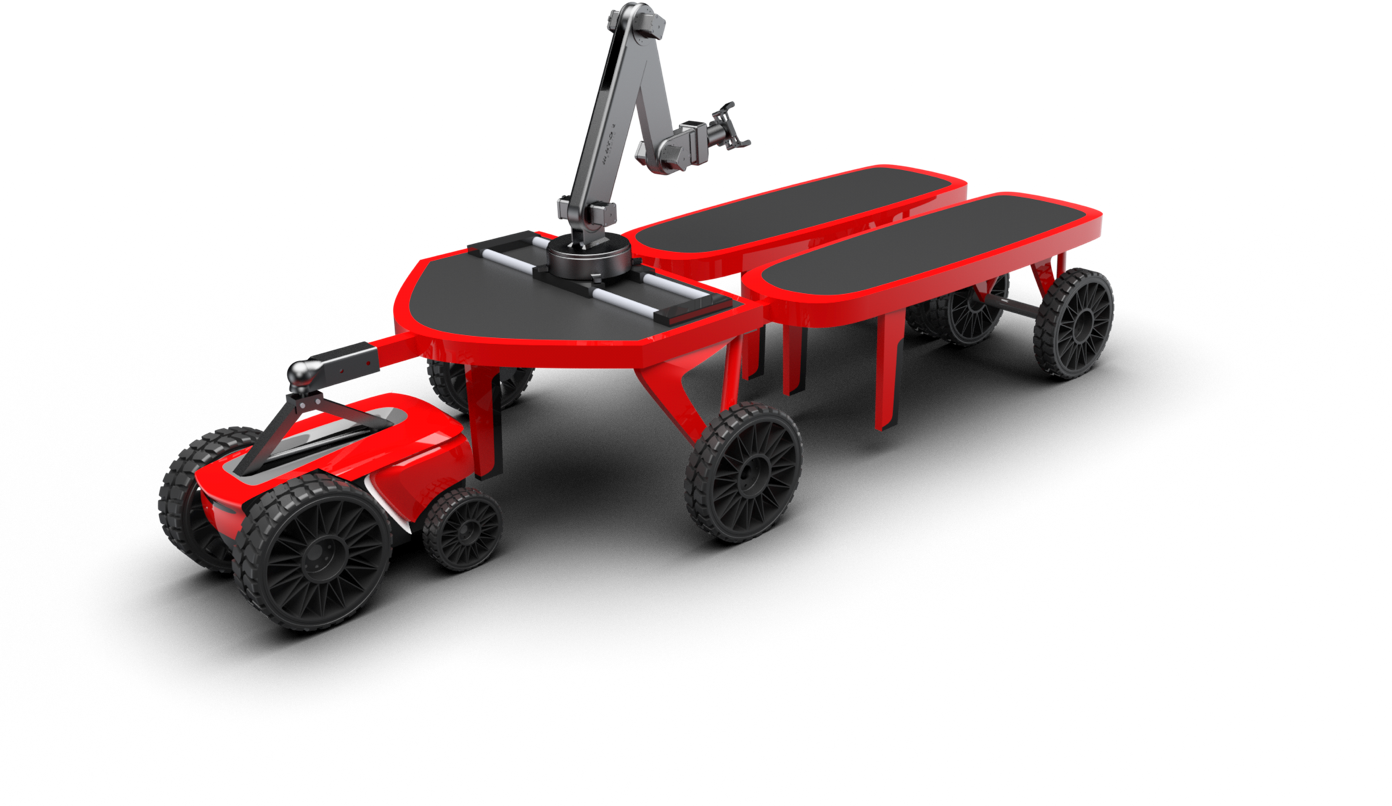
Job loss alert: Tractor drivers and operators of specialized agricultural machinery will be replaced by AI self-driving machinery.
Rail: Automatic Train Operation (ATO) is a current self-driving technology, used in shuttle, metro and rapid transit systems around the world. AI will add safety and efficiency to existing autonomous rail systems and expand self-driving capabilities to all rail systems, including railroads.
Job loss alert: Some train operation jobs will be replaced by AI. Humans will still have a presence, considering the investment.
Boat transport: AI will make cargo ships, ferries, sail boats and sport boats safer. Recreational boats will be available with AI self-driving capabilities, but humans will still enjoy boating at the wheel.
Job loss alert: Some watercraft operation jobs will be replaced by AI. Humans will still have a presence, considering the investment.
Aircraft: Commercial airplanes, helicopters and drones will be self-piloting, through the use of AI. On commercial flights, AI robots will be used for food service, security and ticketing. Smaller AI self-piloting aircraft will be used for taxi, shuttle and delivery services.
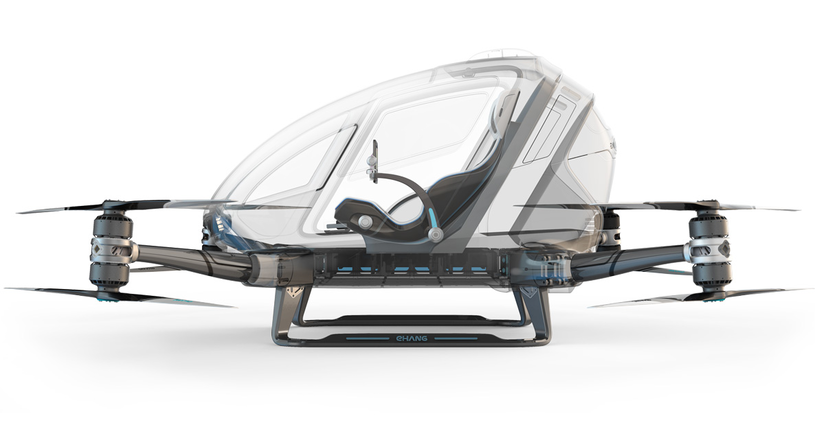
Job loss alert: Pilot and flight attendant jobs will be replaced by AI. Humans will still have a presence on high capacity flights.
Motorcycles: AI self-driving motorcycles have already been built as functional prototypes. They are, however, being developed for safety features rather than self-piloting capabilities. AI motorcycles will be better at avoiding deadly collisions, as a safety assist.
Low or no job loss: AI safety features on motorcycles will save lives and keep workers out of the emergency room.
5
5) AI software applications and AI controllers
Although many AI applications will be hosted by AI robots and self-driving vehicles, most will reside on good old fashioned computers and servers. Many software developers have already added AI features to their offerings. Some are developing new software applications, from the ground up. The future will bring advanced software applications that can leverage AI’s ability to recognize, categorize, make predictions, make decisions and learn.
In addition to PLC technology, there are a number of software languages and proprietary software solutions that are used as controllers, to control machinery. Software controls industrial and commercial machinery, as well as consumer products. In a technical household, it is not unusual to see software controlled HVAC, door locks, security systems and television programming. As AI advances, it will take over all aspects of machine and device control. Many machines and devices will be designed to make choices for us.

Business administration and professional services: There are thousands of software applications currently used to help businesses operate. When it is not practical for a company to develop internal resources, they use outside professional service providers. Accounting firms, insurance agencies and law firms are examples. Professional service companies also use various software applications to perform their specialized functions. AI will advance existing business software and create new software. AI will replace many white collar jobs, as it transforms the following roles:
Bookkeeping
Tax Preparation
Payroll
Employee benefits and healthcare
Associate level data analyst
Application Processor
Underwriter
Document creation
Document review
Trainer
Associate level appraiser
Receptionist
Office Coordinator
Office Manager
Personal Assistant
Associate level purchaser
Data entry
Associate level supervisor
Job loss alert: many white collar jobs will be replaced by AI software applications.
Call centers: We are all used to the main menu, within a phone call. AI will be capable of reasonably intelligent phone conversations and animated video chat. Most customer service and customer support calls will no longer require humans. Call centers that handle such things as debt collection and telephone marketing will be replaced by AI.
Job loss alert: Call center, customer service/support, receptionist jobs will be replaced by AI enhancements to existing software.
Retail stores and supermarkets: AI will be able to perform self-check-out functions, more accurately and more securely than current systems. With computer imaging, AI will know which products are being purchased, without needing to scan bar codes. They will also tie into security cameras, to better detect shoplifting and fraudulent activity.
Grocery stores waste enormous amounts of perishable foods, as they routinely buy more than they sell. Inventory software will use AI to better predict demand, allowing stores to more accurately order what they need.
Job loss alert: Cashier jobs will be replaced by AI enhancements to existing software.
Security and surveillance: AI software will tie into security cameras for advanced law enforcement functionality. Facial recognition will be used to identify individuals and computer vision will spot suspicious activity. With advanced prediction capabilities, AI will be able to protect the property that is the most vulnerable.
Job loss alert: Security and surveillance monitoring jobs will be replaced by AI enhancements to existing software.
Investment advisory and financial planning: Big data is already used to predict market trends, AI will allow individual investors to gain key information and create customized investment strategies without the need for a human advisor. AI will also able to create complex models for more accurate financial planning.
Job loss alert: Investment advisor jobs will be replaced by AI software that can create customized investment strategies.
Marketing and advertising: AI is already used extensively for internet based marketing and advertising. Millions of times per second, AI exposes internet users to advertisements that are specifically selected for them, based on previous internet usage. In this capacity, AI has already created jobs and will continue to do so. Within a broader perspective, AI is stimulating the economy.
Low or no job loss: AI marketing and advertising software applications have already created many jobs and will continue to do so.
Manufacturing, processing, mining, warehousing and agriculture: AI software applications will be used to control automated machines and robotics, replacing PLC technology. PLC troubleshooting and PLC programming skills will no longer be needed, but the industrial mechanics and electricians who have these skills simply adopt to AI. AI will help make their jobs more efficient.
Low or no job loss: AI software control will replace PLC technology, but will not replace industrial mechanics and electricians.
Human Experts

Human Experts – irreplaceable
In the not-so-distant future, AI will prove to be a valuable tool for expert-level workers. Although, the threat to unskilled and mid-skilled jobs is certain, there is plenty of time for transition. Some will ignore approaching change and suffer the consequences. Within a Culture of Experts, human potential will be embraced and growth will be in sync with this next world-altering technology.
Low or no job loss: Expert-level humans will always position themselves above AI, using AI to assist them where applicable.
How will AI change outsourcing and offshoring?
The low cost of labor in third-world and communist countries has caused a world-wide shift in jobs since World War II. Because AI robots will be more expensive than most of this labor force, AI robots will not act as a simple reversal to outsourcing and offshoring. AI software applications, however, will be used in place of live operators, for many telephone customer service positions.
China and the United States will be the two countries that will invest the most in AI and the competition between these two countries will be fierce. One area of competition will be for AI product sales, as each company tries to develop and sell the best AI products. A second AI battle will take place between the manufacturers who will use AI. Today, Chinese manufacturers take advantage of inexpensive labor costs. With AI automated factories, the playing field will be more level.
Please proceed to module #14: Mentoring Students – The Expert Way
Grow a Culture of Experts as you expand your company, use our recruiting services to fill your next open REQ. Go to ww.humancastle.com and call us at (716)222-3535.
© 2025 Human Castle LLC, unauthorized duplication is a violation of applicable laws.
